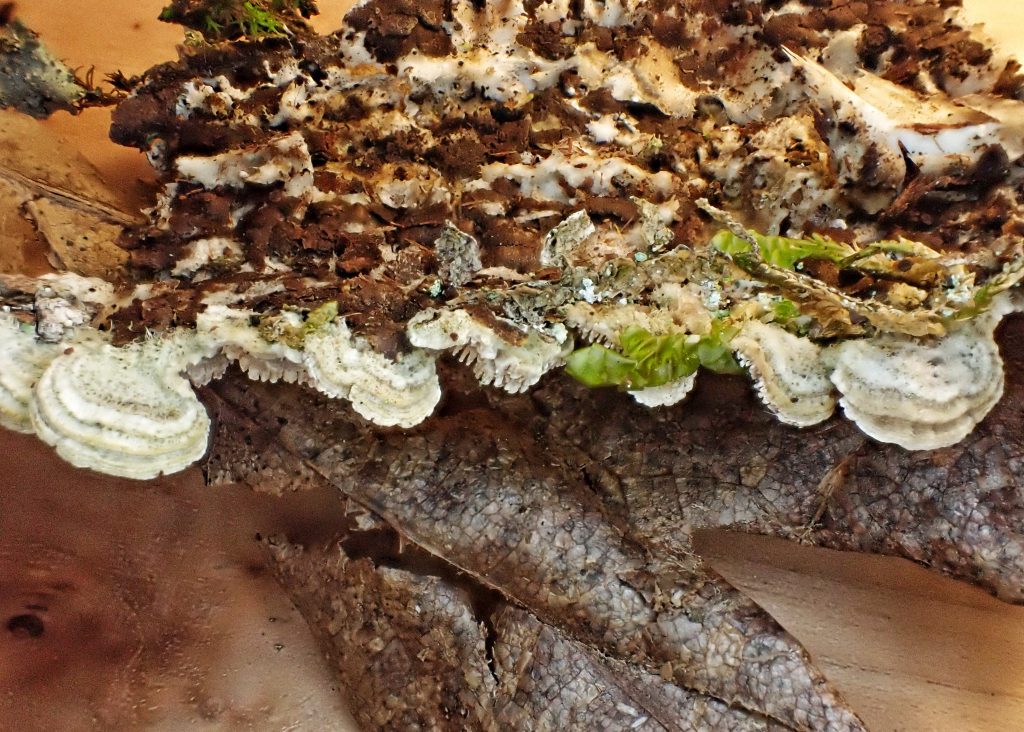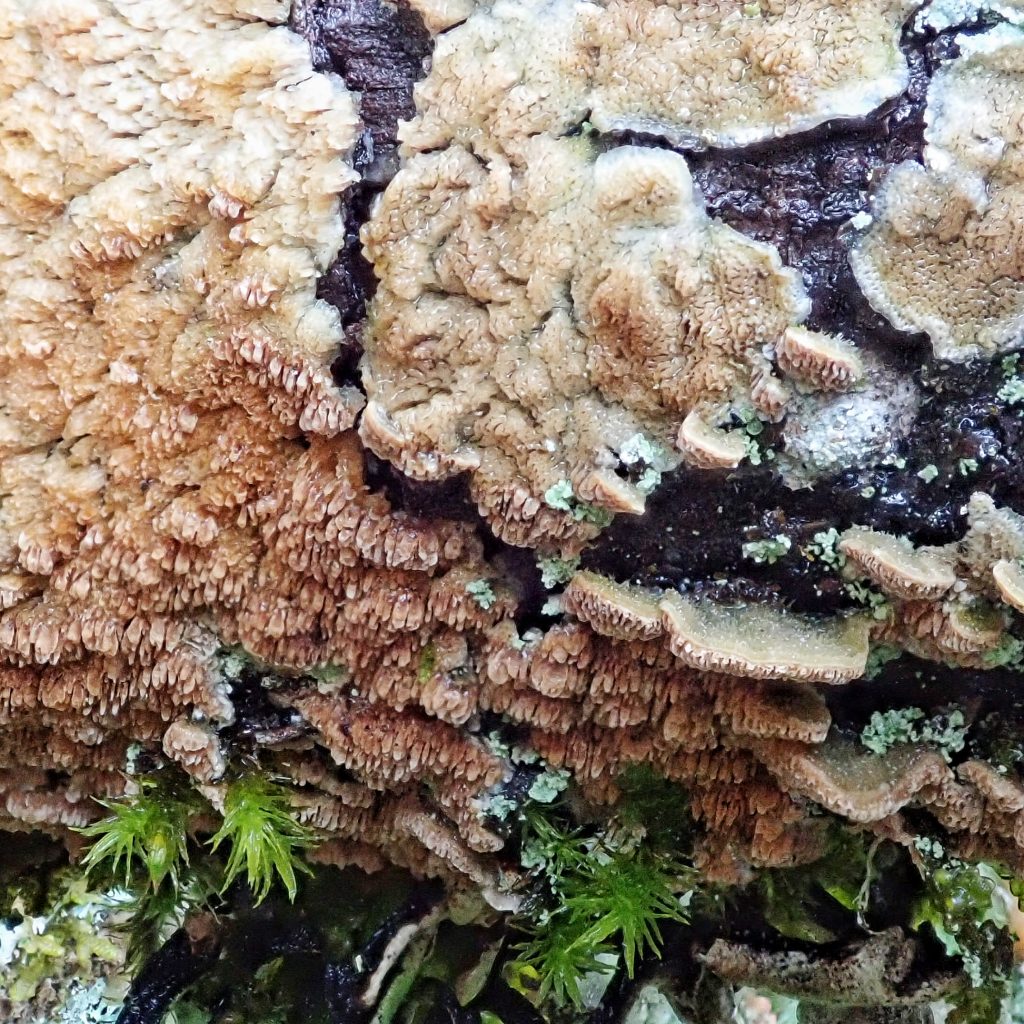
I didn’t have a clue as to what this interesting fungi was when I found it on a conifer log at Cooper Mountain Natural Area, in Beaverton, Oregon. What really intrigued me about it was the way the different forms morphed into each. When I first saw it I thought there were three different fungi, but the more I looked at the seamless way it held together, the more I became convinced it was all of a piece. So I sent some photos to my friend Kem Luther, who wasn’t familiar with it either, but who sent the photos around to his mycologist buddies. And one of them, Michael Beug, identified it as Trametopsis cervina, an uncommon species here in the west, although it must be noted that there wasnt complete consensus. But the other possibilities that were floated didn’t fit nearly as well, and this identification definitely fits my specimen.
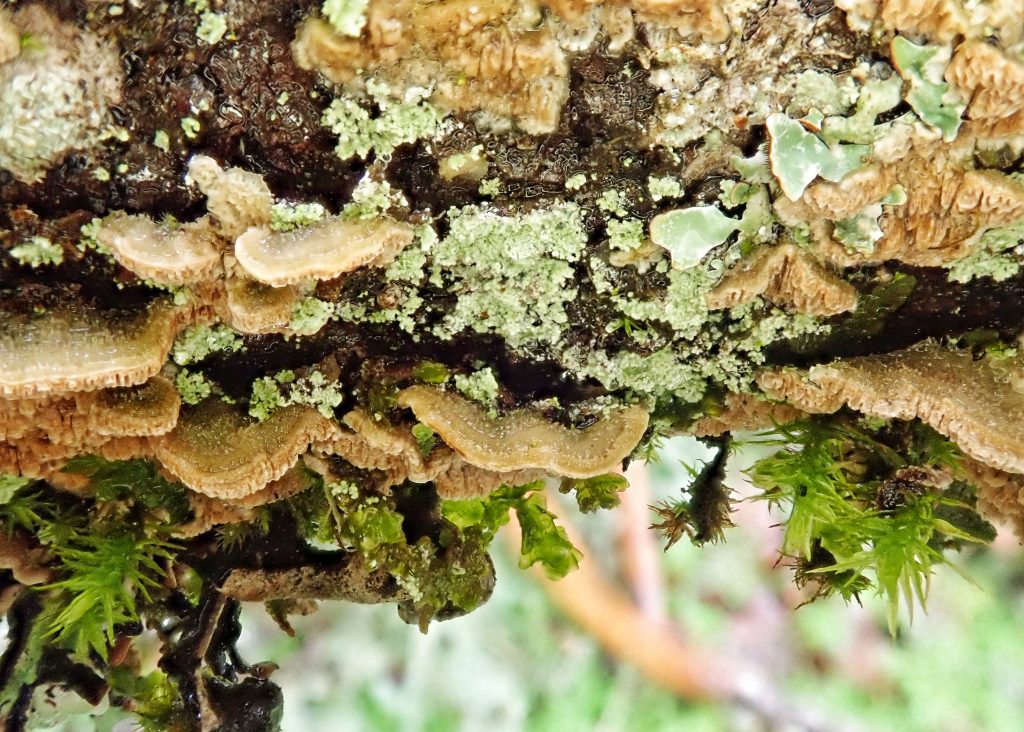
This taxon has bounced around in several different genera, including Trametes (which contains Turkey Tails), and used to be in the family Polyporaceae. But Spirin and Zmitrovich erected the family Irpicacea in 2003 to accommodate many of the former genera of Polyporaceae that comprise species with both gilled and pored reproductive structures, and/or crustal or capped forms.
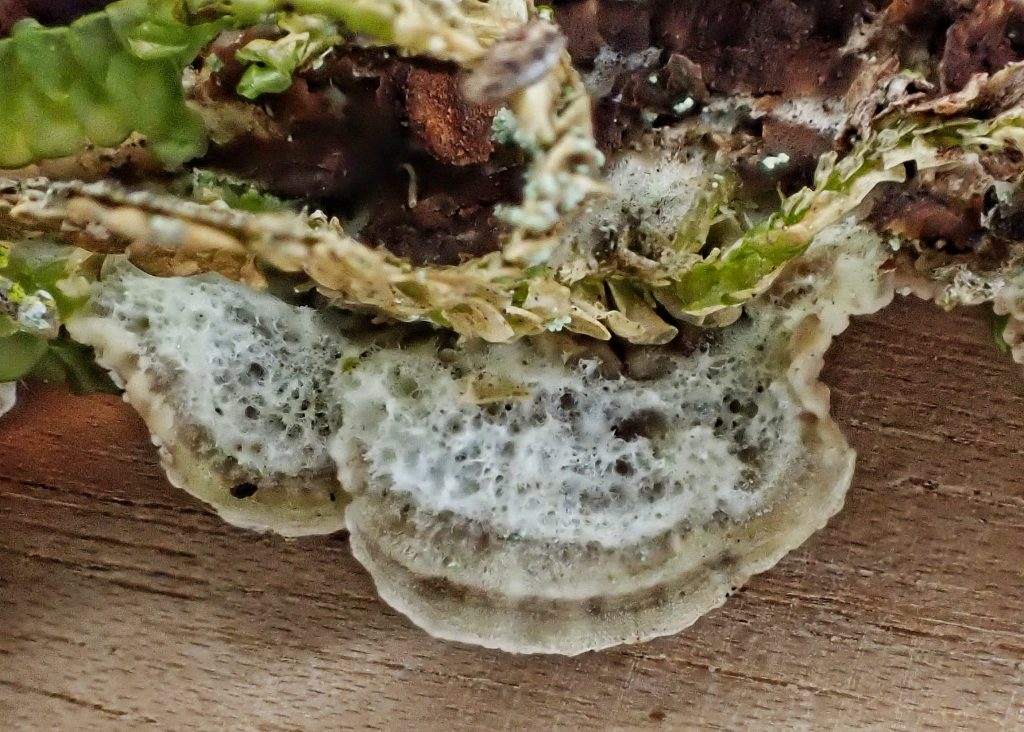
This white rot saprobe is quite beautiful, or at least aesthetically interesting, despite its lack of any overall symmetry, though it does have symmetrical areas. Close examination made me think of geologic formations, or the calcium deposit structures in caves. In fact I think that what made it so compelling for me was that it looked like rock, but was instead an organism which uses all of these interesting morphological feature for the purpose of reproduction.
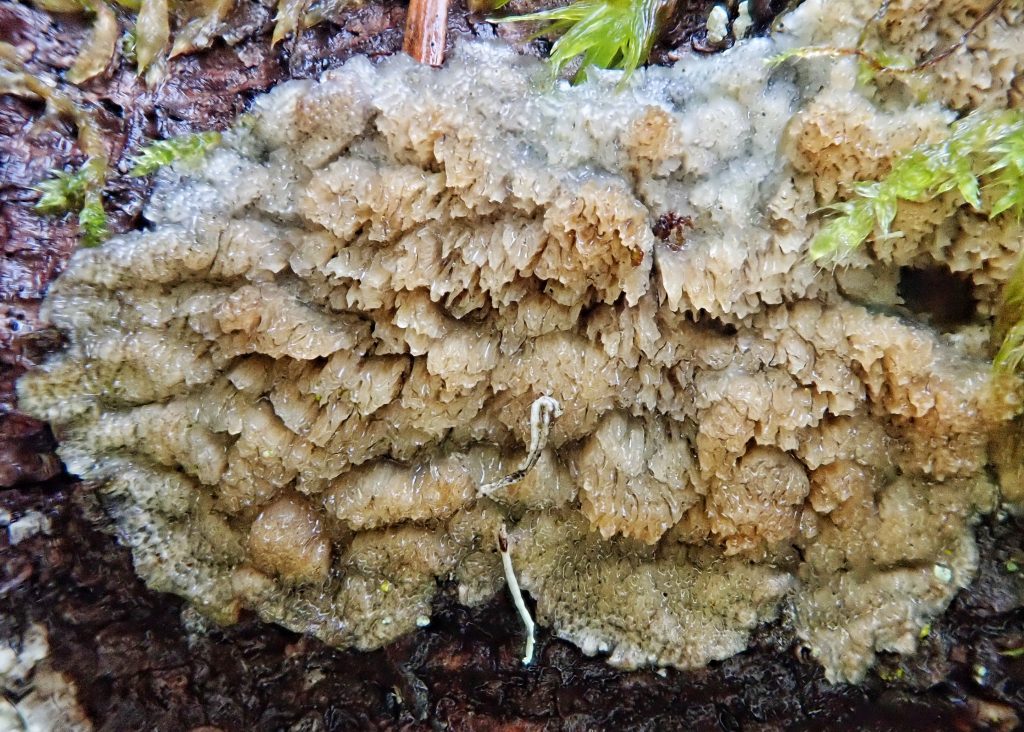
Description-Sprawling mass with both crustal aspects and caps; buff to tawny, pinkish, or grey, caps often with light margins; mazelike pores same range of colors, often toothlike in early and late stages of development;spore print white or light pink, spores cylindrical, 5-7μm; on this specimen all of the brackets (or shelf bodies) were 10mm or less wide, but they may be much wider.

Similar species-I couldn’t find a key for this family, and expert guidance and microscopy will probably be required to identify it, or completely eliminate similar species, especially those in Gloeoporus, Byssomerulius , or Meruliopsis; Trametes sp. seldom have a crustal aspect; Phlebia sp. seldom have brackets.
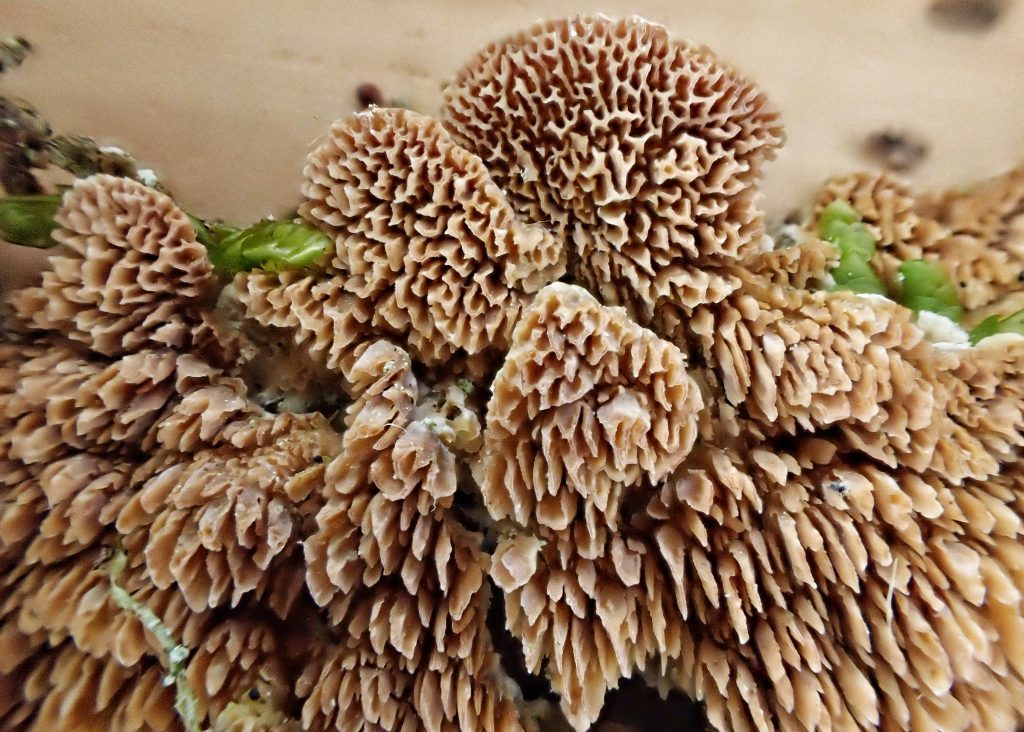
Habitat-Saprobic on dead wood, primarily hardwoods but occasionally on conifers.
Range-Much more common in eastern North America, but also found in the west, as well as in Eurasia; I can find little data for our region, but it looks like it is found mostly west of the Cascades in lower elevation forests.
Reproductive timing-I can find no information, but most annual bracket fungi form fruiting bodies and spores in late fall and winter, although the brackets of this species may persist into spring
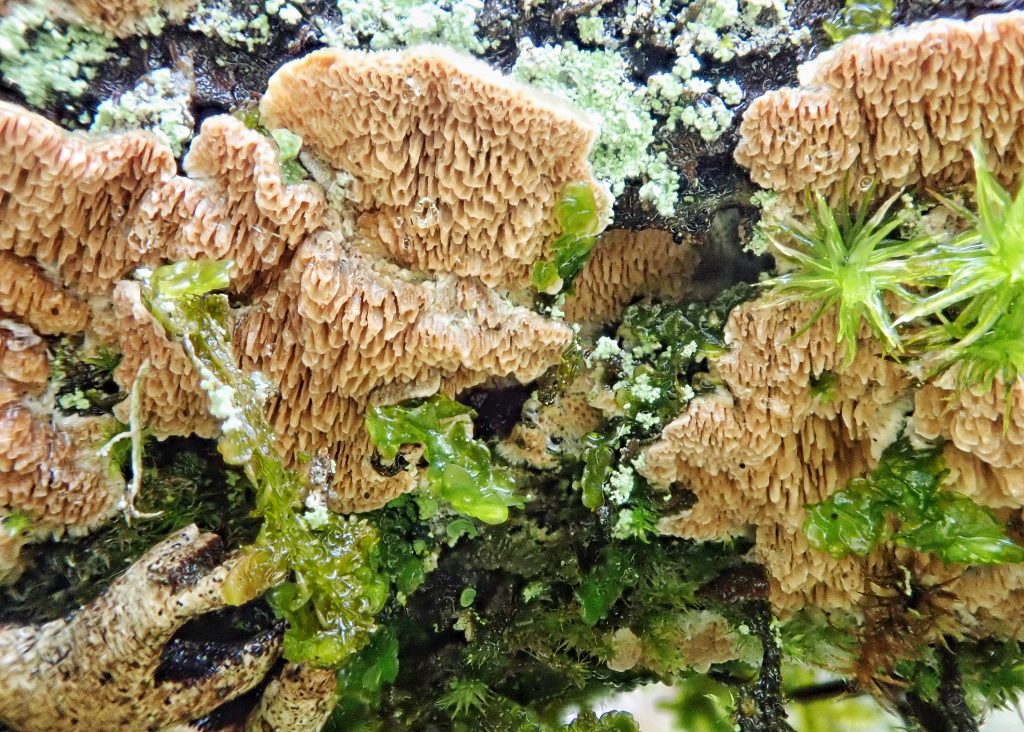
Eaten by-I can find nothing specific for what eats this species, but I’m sure that some of the usual fungi feeding suspects consume it, including but not limited to, larvae of flies in the families Platypezidae, Mycetophilidae, and Phoridae; springtails in the order Entomobryomorpha, as well as many other collembolans; probably also consumed by slugs, snails, woodlice, and some beetles in the families Leiodidae, Staphylinidae, Endomychidae, Tenebrionidae, and Erotylidae amongst others; and small mammalian herbivores.
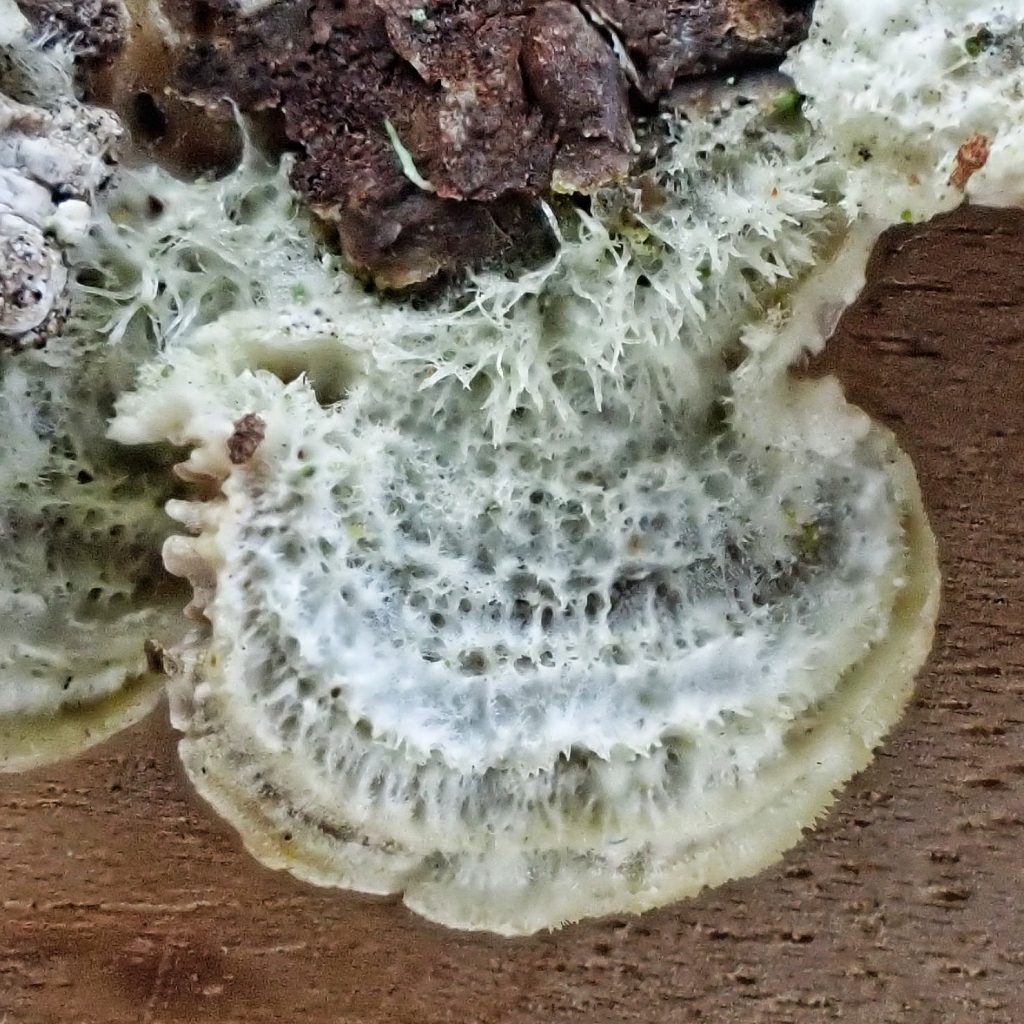
Etymology of names–Trametopsis is from the genus Trametes, in which this species was placed for some time, and the Greek suffix for ‘outward appearance’. Basically they’re saying this looks a lot like a Trametes, but it is not.The specific epithet cervina is from the Latin for ‘tawny/fawn colored, and may refer to the general color of this fungus.
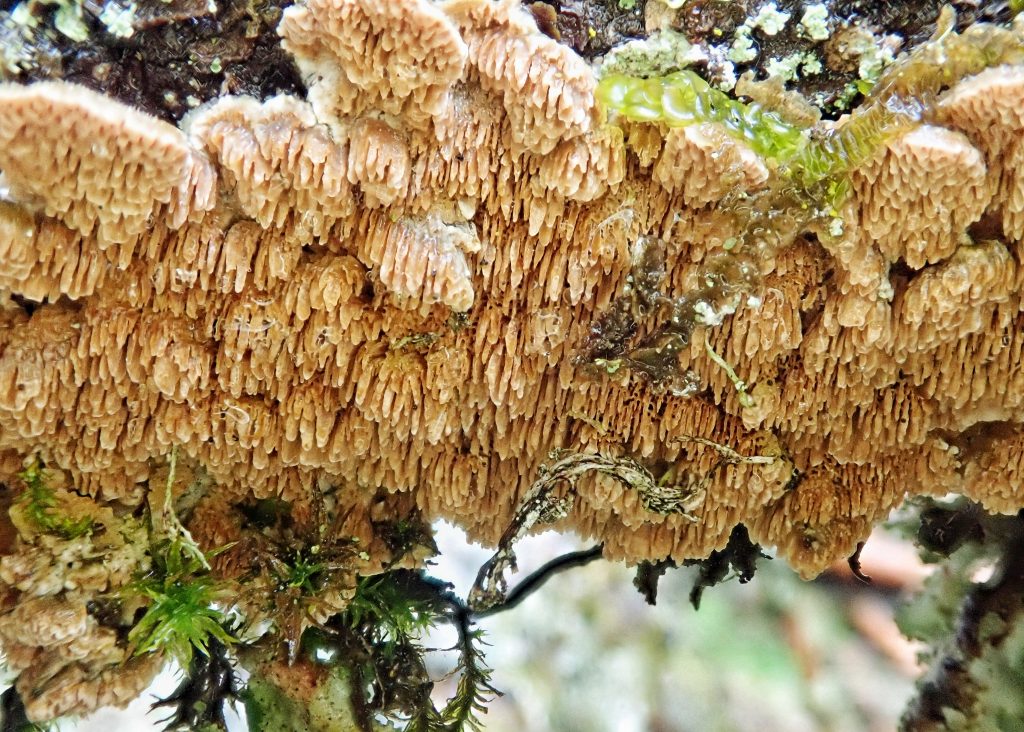
https://www.mycoguide.com/guide/fungi/basi/agar/poly/irpi/tram/cervina
https://www.texasmushrooms.org/en/trametopsis_cervina.htm
https://mycocosm.jgi.doe.gov/Trace1/Trace1.home.html
Trametopsis cervina | Project Noah
